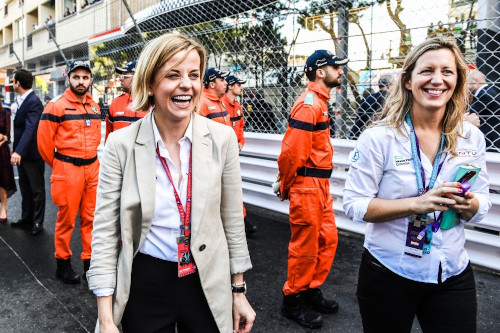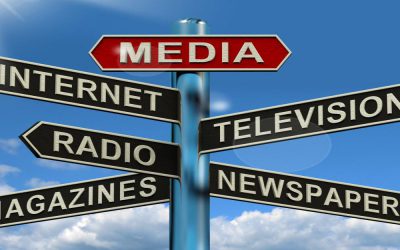Liz Brooks has been an integral part of motorsport for nearly two decades. The PR expert has worked with some of the biggest names in the sport: Eddie Jordan, Lotus and now Susie Wolff with the Formula E Team, ROKiT Venturi Racing to name but a few.
In this interview she talks about how her career started, about being a woman in a male-dominated field, the changes and challenges of motorsport PR, and what advice she would give young women who want to work in motorsport.
How did you get into Motorsports and why?
Great question because many young people are interested in that answer. For me it was a case of right place, right time. I was working at a PR agency. One of my clients was Kawasaki, I was the account manager for the motorcycle side of the business and I had the chance to see what they were doing in motorsport with British and World Super Bikes and Superstock. That was really my first glimpse into the world of racing. During this time, I had a call from a Kawasaki dealer who was lending a bike to the F1 boss, Eddie Jordan, and he wanted to create some buzz around it so I arranged a photoshoot with Eddie and the bike in question. I was messing around on the bike helping the photographer set up when Eddie came out of his office. Being full of the confidence that can sometimes come with youth, I chatted away to Eddie as if we were old friends. We had a great connection instantly, and I was fascinated by this larger-than-life character and his vision for the team. Two weeks later, he contacted me and offered me a job. It was really a case of being in the right place, at the right time but it was also a lot to do with my confident and chatty nature. I was lucky but made the most of the opportunity that presented itself.
Did you have an interest for motorsport before that?
I have always been interested in sport in general, not specifically in motorsports. I come from a sporty family, more track and field and team sports. I had never watched Formula 1 or motorsport with my parents. My first Formula 1 race was actually when I was working for Eddie Jordan. I could instantly see and appreciate the appeal though. I have always believed that sport has a unique capacity to cross all kinds of cultural and social boundaries to do good and unite people.

Susie Wolff & Liz Brooks
How did you end up starting your own agency?
I think I always had in my mind that I’d like to work for myself at some point. There’s an autonomy that comes with working for yourself that can be frightening but is also really appealing to me. I’d reached Director of Communication in several roles pretty early on in my career and from there, traditionally there isn’t much higher to go. In 2012, I had my son Felix whilst I was working for Lotus with Dany Bahar. When he left, he suggested that I set up my own business with him as my first client. Again, it was a case of being in the right place at the right time but it’s not a decision I took lightly and working for yourself isn’t for everyone. You have to be sure to be doing the right thing before taking the leap. I was lucky that I had the opportunity to carry on my work from Lotus with Dany, it was a very calculated risk to take and easily one of the best decisions I have made.
What does a typical day look like?
There is no typical day really and there has never been in my career. The day is made of different things: responding to media inquiries, scheduling interviews, strategising, messaging for my clients and thinking about their audiences, doing research, which means a lot of reading, planning, reacting to things that happen around your clients. Now with the global pandemic and lockdown in London, I also have to factor in my son’s online schooling which is a juggle but we make it work. For me the most important thing is being able to prioritise effectively otherwise it would be very easy to feel overwhelmed.
You have been working in different areas of motorsport like Formula E and Formula 1. What is your best memory?
I have two: I had the privilege to work with one of my very best friends, Natalie Krushner (now Neal), on promoting the Formula 1 Grand Prix of Mexico when it made its return to the calendar in 2015. When the race was over, we had the podium ceremony in that special stadium section of the track – Fora Sol: it was such an unbelievable atmosphere and such a special moment. We had put so much blood, sweat, and tears into promoting the race and it was truly amazing to see it become such an award-winning and FIA-recognized event all over the world. It was a moment of triumph but also mixed emotions of ‘Yeah, we did it’ and ‘wow I’m glad that’s over’. The passion of the people was like nothing I have ever experience before – Mexico has the best fans in the world. You can write great press release and engage with people but you can’t change the atmosphere that people bring into a race track. That was a very special moment and one I will never forget.
The second memory is Formula E-related with the team I work with, Venturi. We had our first victory in 2018 in Hong Kong and that was a special moment. I had been there only for nine months but I knew it was a place I wanted to stay.
What was the most challenging moment in your career?
There are always challenges when you deal with multiple clients in multiple time zones and you’re running your own business, it’s different if you’re focusing on just one thing such as being Head of Communication for a team.
One moment that comes to mind is when one of the race drivers I was working with suffered a very sudden personal loss during a race weekend. Working with him to get through that situation, trying to support him with the immediate aftermath of the shock, and support his decision to continue to race that weekend, was a very emotional experience. It was extremely tough and I have nothing but the greatest respect and admiration for the way in which the driver dealt with the situation.
So, would you agree that the challenge for a PR person is to be detached enough in such difficult situations to do the job but also allow a place for emotions?
That’s right it’s about balancing the human side with strategic thinking. Part of what makes us good at our jobs, and why people want to work with us, is because we are very human and grounded, and we create strong relationships with the people we work with. When you have a difficult situation and you need to be able to detach from the emotion, that’s where we can shine because we got that great relationship and the people we work with trust us to work with their best interests in mind. Of course, we have emotions, but at some point, your experience and professionalism needs to kick in and you have to go into strategy and management mode. That’s not something you can learn at a university in my opinion. That’s the university of life. That’s also the pay-off of getting older. We generally trade wisdom for youth and develop an even greater capacity to deal with testing situations.
Would you say that being a woman in motorsports is an advantage or disadvantage?
I have never seen it as negative. I was talking earlier about the ability to forge relationships and to connect with people. Women are still in the vast minority in motorsport but I’m not afraid to show my soft side. That’s how I build strong bonds with the people I work with. Sometimes people make assumptions when you don’t have an engineering background that you then don’t have the technical know-how and understanding, and PR is sometimes seen as a less serious role in motorsports. That’s something I have worked really hard to mitigate and I try to educate people around me and those in our industry that without us there is no audience. And if there is no audience, then there is no sport. Everybody has their place and their role to play. It’s not because I’m not a technical person that my role is less important. And my gender has never had a detrimental affect on my ability to do my job, I would argue quite the opposite.

Eduardo Mortara & Liz Brooks
Do you have any advice for a young woman who wants to work in motorsport?
Do your research. Think very carefully about what appeals to you in motorsports. That decision is really important and will help you when things are difficult – and there are many difficult days. Think about your motivation, network like crazy, use social media channels like LinkedIn. Find your local racetrack and volunteer at events, make yourself known. Get in touch with people, don’t be afraid to put in the work and the hours and do your research. Don’t be afraid to ask questions!
What are the most important personal skills you need to have to work in motorsports?
You need to be confident and open-minded, because you’ll have many situations that you can’t train for. You need to be respectful, so that you can develop the relationships you need to foster to be able to do your job effectively. You need to have people skills to be able to read a room, to know when to approach somebody for a quote or information and when to hold back. You have to be good at reading people and that comes with experience and confidence. You need to know when to step in in an interview because you can see that your person is feeling uncomfortable. You need to be good at multitasking. When listening to somebody, you’re generally already thinking about the next interview and the message you need to get across. And you need to have an epic level of endurance. If you’re somebody that needs a lot of sleep, motorsport is not for you!
What is good PR?
Good PR is an authentic story well told. It’s when you leave your audience understanding exactly what you stand for and why they should care.
What is a no-go in any PR strategy?
Oversharing – leave your audience intrigued and wanting a little more. Also from a driver PR perspective, unnecessary speculation that can have a negative impact on your team never goes down well. When people are pushing hard, it’s easy to make mistakes and presenting a united front publicly is often the best strategy whilst things are investigated.
What are the challenges in motorsport PR
It’s a very competitive environment but sometimes less is more. You might feel you have to communicate constantly to engage and build your audience, but sometimes you need to hold back a little and keep a little bit of a mystery. Decide how you define yourself versus your competition – what makes your team, your driver or your brand unique. That’s one of the big challenges in motorsports because there are big budgets and everybody wants to win. Focus on getting across those things that set you apart in your messaging. And sometimes that means not communicating the entire time. Sometimes it means holding back and then doing something big and beautiful that represents the image you want to create.
What is the most important aspect of dealing with the media?
Telling the truth and being authentic and respectful. If you can’t find the time, you tell them why you can’t. You need to learn what the journalist needs, to understand their angle, and what they’re looking for. It is helpful to know what they have written about in the past too so showing respect by doing your research is really crucial.
How has PR evolved over the last 10, 15 years, leaving social media aside?
Many of the old rules still definitely apply and we are working in the relationship business. But it’s not about raw talent anymore a lot of the time it’s about the optic, how something looks. Sometimes it’s about box ticking. It’s not always about being the most qualified human being anymore, it’s more about how does it work for the sponsors and for the audience. That’s why it’s an absolute joy when you work with authentic, talented people, that’s half the battle won for you – I’m very lucky in that respect, I get to work with some fantastic individuals.






